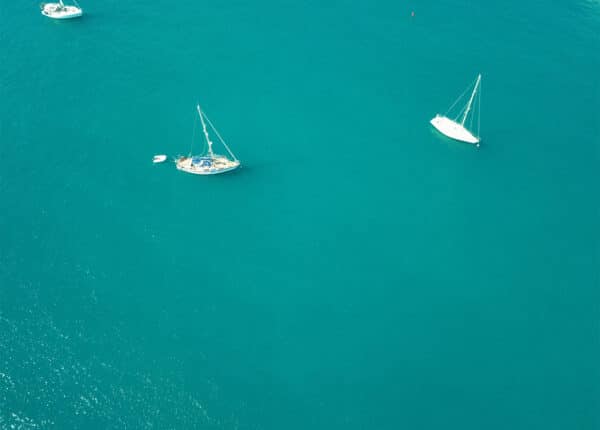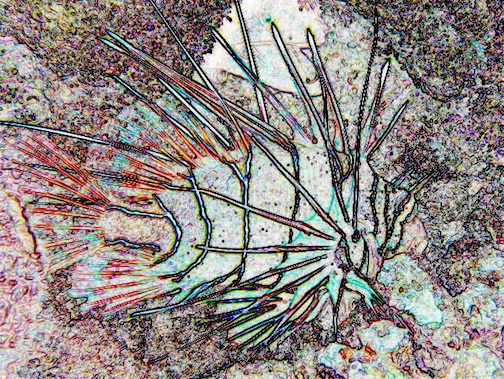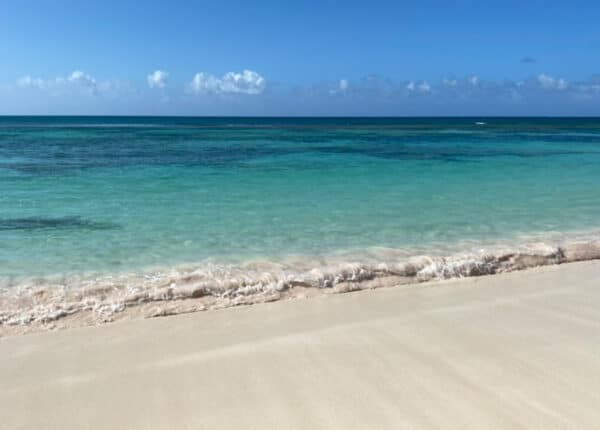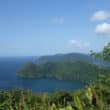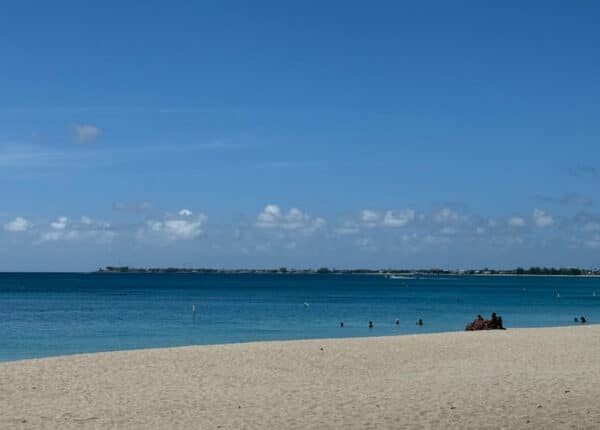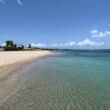By Jim Hart, Stacy Frank and Courtney Platt
Op-Ed Contributors
The lionfish’s day of reckoning may be at hand, however a modest reckoning it may be. These beautiful, voracious feeders, with a prodigious reproductive rate of up to 30,000 eggs every four days, and no natural predators, are an acknowledged threat to every aspect of life in the small island nations throughout the Caribbean. In the Cayman Islands, these exotic, reef-killer fish are under siege, and the results are telling.
A new research report entitled “Coping with the Lionfish Invasion: Can Targeted Removals Yield Beneficial Effects?” from the Central Caribbean Marine Institute (CCMI), located in Little Cayman and the University of Florida, published on July 12th of this year, clearly concludes that multiple culling efforts at one site reduce the lionfish population significantly.
Divers on the island will tell you that they are finding fewer lionfish in Bloody Bay Marine Park thanks to the community effort. The report, appearing in Reviews in Fisheries Science, says that “the lionfish removal efforts on Little Cayman provide, for the first time, compelling evidence that targeted removals can and do reduce numbers of lionfish.”
In other words, culling works!
Local inhabitants, resort owners and dive operators of Little Cayman have been fighting the infestation of these invaders through regular organized vigilante “culls” since the grassroots social movement to control the lionfish began to build momentum in January 2011.
A group of community leaders formed weekly culls by early 2011 to hunt lionfish.
Each dive operation on Little Cayman alternates in providing a dive boat once a week for volunteers, who are restricted to dive masters and instructors for safety and efficiency.
What is unique to this effort on Little Cayman is the collaboration between scientists and the community in these culling efforts. The scientific team uses the lionfish caught by the community to study and to collect data on growth rates, sex, and reproductive success.
Local business operators and dive instructors need valid science based outcomes to muster support for the sustained control of the lionfish. Partnerships like this, between scientists focused on research and communities focused on commerce, are important to the future of the Caribbean.
What is unique on Little Cayman is the collaboration between scientists and the community in these culling efforts. The scientific team at CCMI uses the lionfish caught by the community to study and to collect data on growth rates, sex, and reproductive success. Local business operators and dive instructors need valid science based outcomes to muster support for the sustained control of the lionfish. Partnerships like this between scientists focused on research and communities focused on commerce are important to the future of the Caribbean.
The culture of protection in the Cayman Islands that extends to reef preservation, the endangered grouper, and other native fish populations is standard operating procedure for the islands and their biodiverse eco-systems.
So it should be no surprise that local divers, determined not to sit by and see their livelihood and the native fish population decimated by lionfish, energetically emerged in both Little Cayman and Grand Cayman, to combat the invasion that had burned through the Bahamas and other parts of the Caribbean.
Dottie Benjamin, legendary dive master and conservationist at Reef Divers at the Little Cayman Beach Resort, received the “Female Lionfish Hunter of the Year” for numbers of lionfish caught by an individual female beginning with 40 in 2009, 220 in 2010, and 177 in 2011, when the official community culls began on Little Cayman.
Dottie remembers how she felt when a guest reported the first lionfish sighted in Little Cayman waters at Barracuda Bight in February, 2008 and presented her with a blurry inconclusive photograph as proof.
Data from the Bahamas was proof of the devastating impact an unchecked lionfish infestation could have on native fish populations and the reef systems. A diver from DoE came out and speared the alien invader.
She recalls in hindsight how small the invader was, a juvenile or intermediate, but to her it looked huge and dangerous. In 2009, at Mixing Bowl, Dottie spotted the next lionfish. She retrieved a dive mask box from the dive boat, and made all her guests remain onboard while she captured the lionfish using a snorkel to herd her first catch into the box.
Dive guests marveled at the seductive little monster trapped in the box. The fish was sent off to the Department of the Environment (DoE) where scientist, Croy McCoy, proceeded with research and investigation.
All lionfish caught in the Cayman Islands were initially required to be sent to the DoE to be examined. Patrick Weir, divemaster and lionfish hunter, remembers the first lionfish sighted and killed in Grand Cayman in January of 2009. He was present and photographed the event when DoE researcher James Gibb arrived and speared the lionfish. This spear method was faster and more efficient than Dottie Benjamin’s dive-mask-snorkel herding method.
However, the spearfishing restrictions for locals anywhere in the Cayman Islands presented a serious problem as more and more lionfish began to appear all around the islands within the year after the first sightings in 2008. The Cayman Islands had not dodged the lionfish bullet. An invasion was imminent and growing.
Lionfish hunters had to become creative to capture the creatures. Oversized aquarium nets, catch bags and gloves required multiple divers to capture one lionfish. The process was slow and cumbersome. With no other natural predators except humans, the lionfish could reproduce faster than they could be controlled. Without faster and more efficient means of bagging lionfish, locals believed the battle against the growing numbers of lionfish would be futile.
A bold decision by the DoE in response to requests by dive operators armed lionfish hunters with spears. In August of 2010, spears were allowed in Cayman waters, specifically for lionfish culling alone. The DoE controls the issuing of pole spears to licensed divers who must pass a training orientation to be eligible for a licensed spear. The DoE proved diligent about concerns for diver safety and any abuse of the privilege to hunt lionfish exclusively, with fines and penalties for any infractions.
Dive operators and local divers eagerly sought permission from the DoE to license spears and organize lionfish culls in order to curb the impact of the lionfish invasion.
Suddenly, a single diver using a spear could bag 20-40 lionfish in one or two dives. The potential to turn the tide of the invasion, so to speak, became a reality overnight.
Lionfish hunts, derbies, and culls took on the appearances of Social Networking. Local divers and groups like the Aquaholics on Grand Cayman began hunting lionfish with a vengeance.
John “Dry Rot” Ferguson and his Fisherkings on Grand Cayman proudly displayed their weapons of lionfish destruction for photographer Courtney Platt. Dry Rot demonstrated his “Stuff and Go” five gallon catch bucket in a Skype interview with the authors fashioned from a heavy plastic water jug, a filleted funnel where the lionfish is shoved into the bucket still on the spear, which automatically removes the fish when the hunter pulls the spear back out through the barbed funnel. Dry Rot has held up to 83 lionfish at one time in his contraption.
One unintended consequence of the increased lionfish culling has been the increase in stings by the venomous fish. As Sharon van Niekerk can attest to, the sting can be horribly painful and lead to necrosis. Sharon was stung deep into one of her thumbs in 2010, necrosis of the tissue occurred and she still has residual numbness in that area to this day. Sharon incurred roughly $500 in medical bills due to the sting.
Diver’s Alert Network (DAN) diver’s insurance covers medical costs related to lionfish stings and injuries from other hazardous marine life, something few divers are aware of.
The positive results of the culling efforts on Little Cayman are detailed in the CCMI report, “Coping with the Lionfish Invasion.”
The hope on Little Cayman, as Dr Carrie Manfrino director of Research and Conservation at CCMI notes, is that further research will be funded to help understand whether the efforts to remove lionfish will have a long-term positive impact on the native fish populations.
Our oceans are the crown jewels of our planet and it is our collective duty as citizens, scientists, and government leaders to work together to protect and preserve these treasures.
James V. Hart is a screenwriter with numerous writing and producing credits including Hook!, Bram Stoker’s Dracula, Contact, Sahara, August Rush and others. Stacy Frank has been an avid scuba diver since 1973 and lives to dive. She has a master’s degree in Industrial and Organizational Psychology. Courtney Platt is a Caymanian professional photographer who has made over 5,000 dives in Grand Cayman since 1983.
Note: the opinions expressed in Caribbean Journal Op-Eds are those of the author and do not necessarily reflect the views of the Caribbean Journal.
